
MATIÈRE SENSIBLE
Florian and Sophie are passionate about travel, crafts and antiques. Two lovers of gesture, proportion and materials. As passionate about the city as they are about life, they founded the Sensible Paris studio together.
No wonder their Parisian cocoon is overflowing with beauty. Beauty as a way of life.

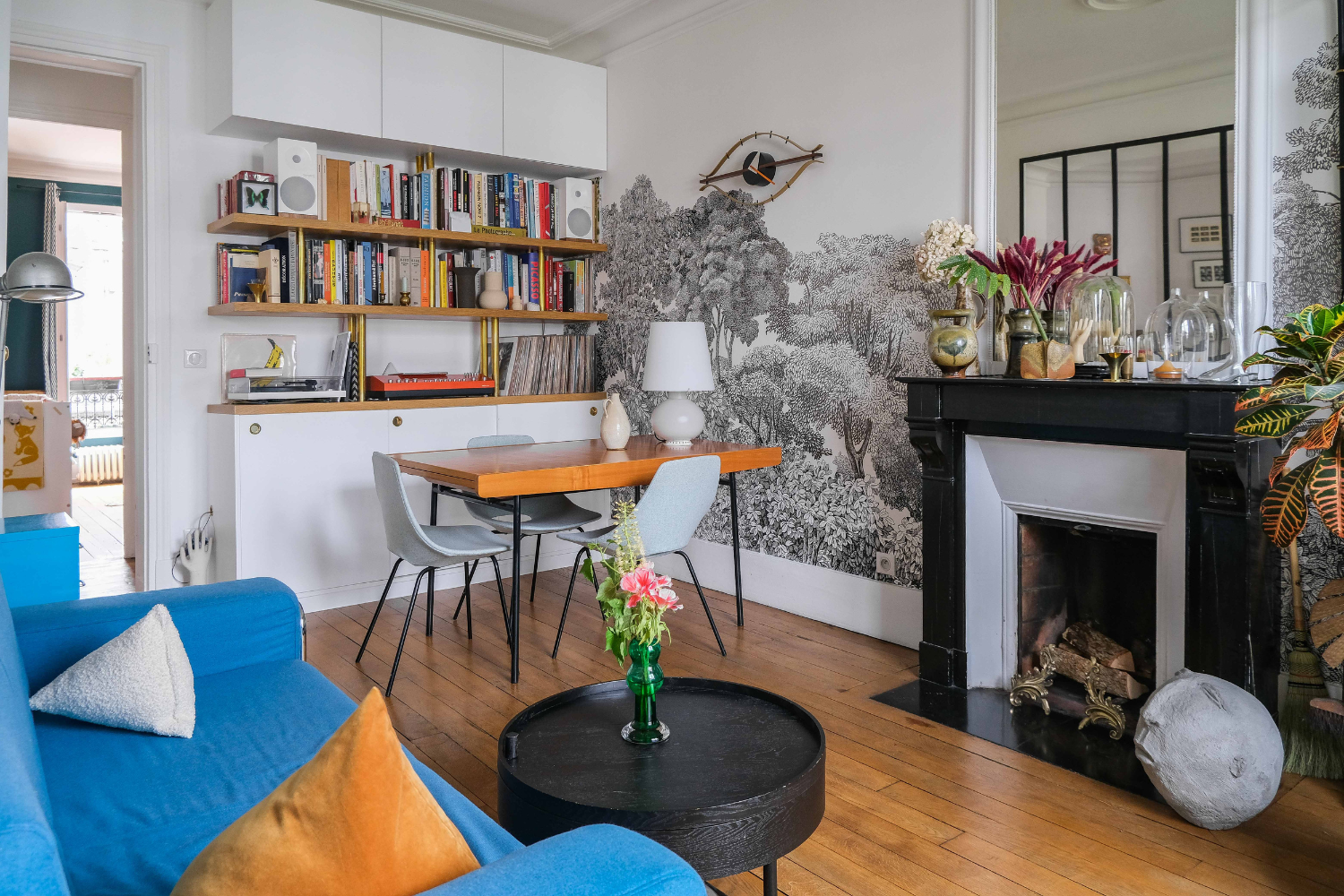
The pair, partners with ARCHIK for design and decoration projects, share a mission with us: to invent new ways of living well at home, to create their own “art” of living.
They chose ARCHIK to accompany them in the sale of their Paris apartment located between Buttes Chaumont and La Villette, and it was Agnieszka who accompanied them in this project.
What was your first impression when you visited? Why this apartment?
F – S – For us, an interior is the embodiment of an identity. It’s not just decoration. Designed on an open, graphic square plan, this apartment offered an ideal space to play with light, thanks to its unobstructed perspectives, proportions and preserved antique features.
Voluminous, charming and surprisingly well-proportioned, this Alice-in-Wonderland apartment had everything we needed. It became the backdrop for our audacity, evolving as we found it.
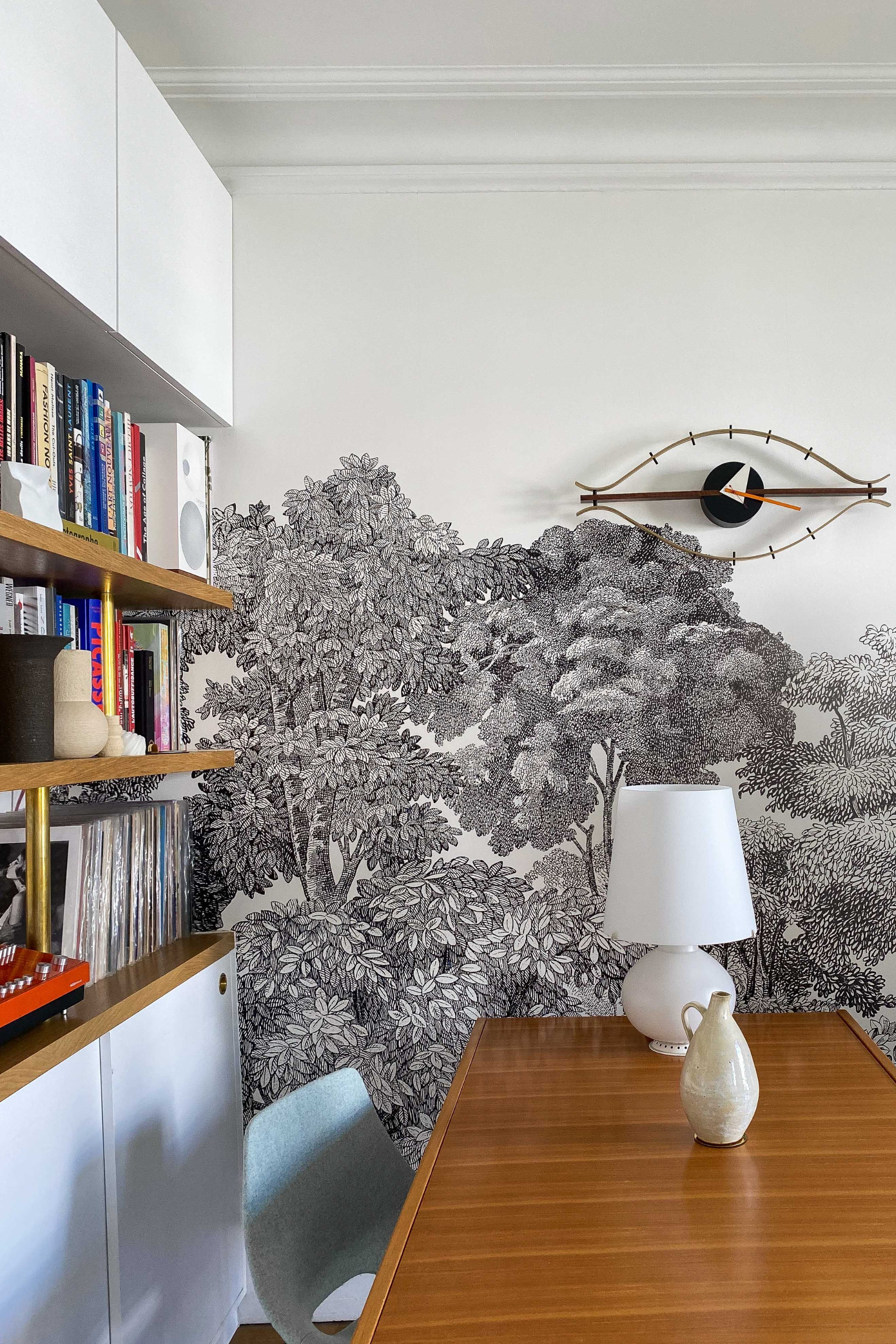
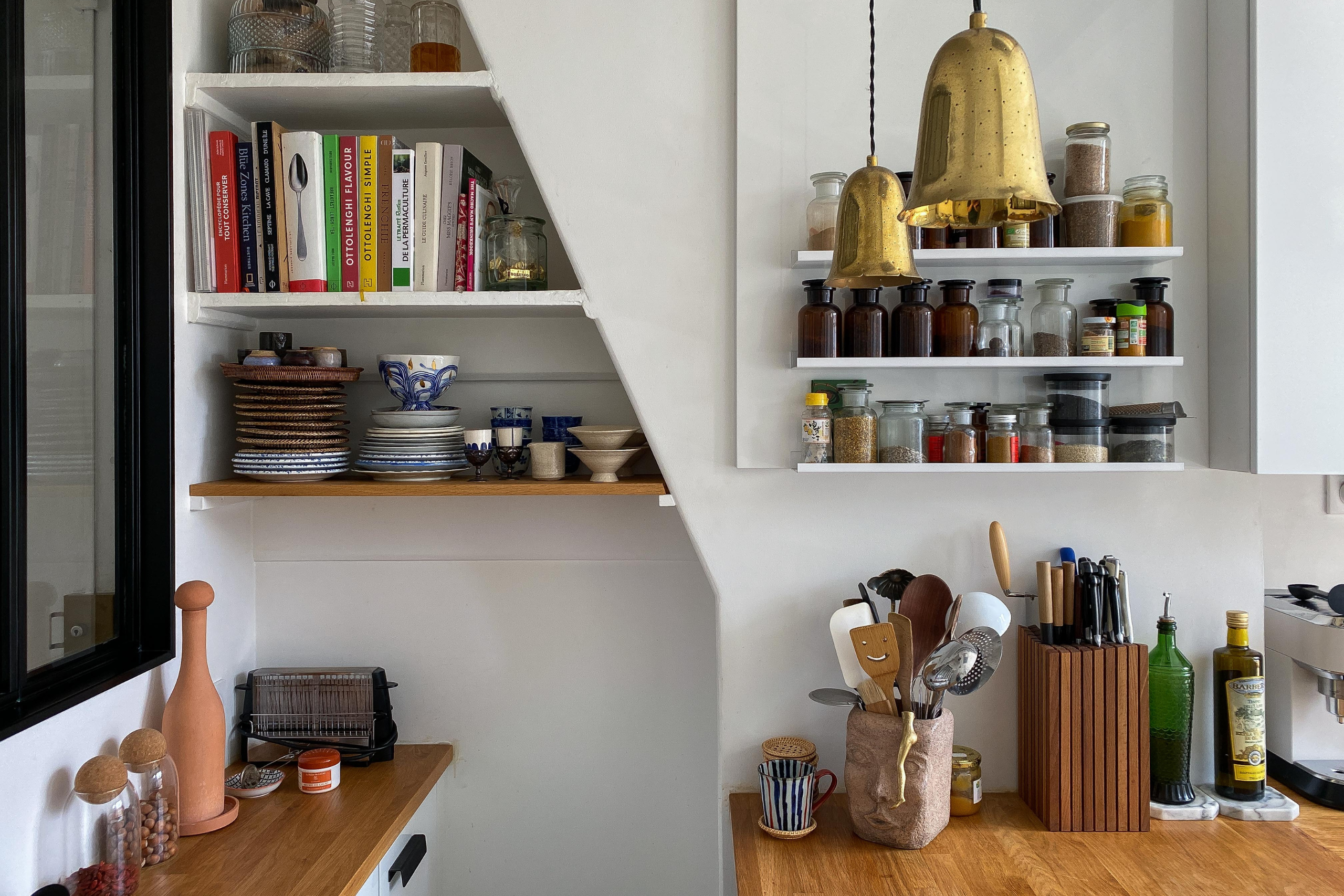
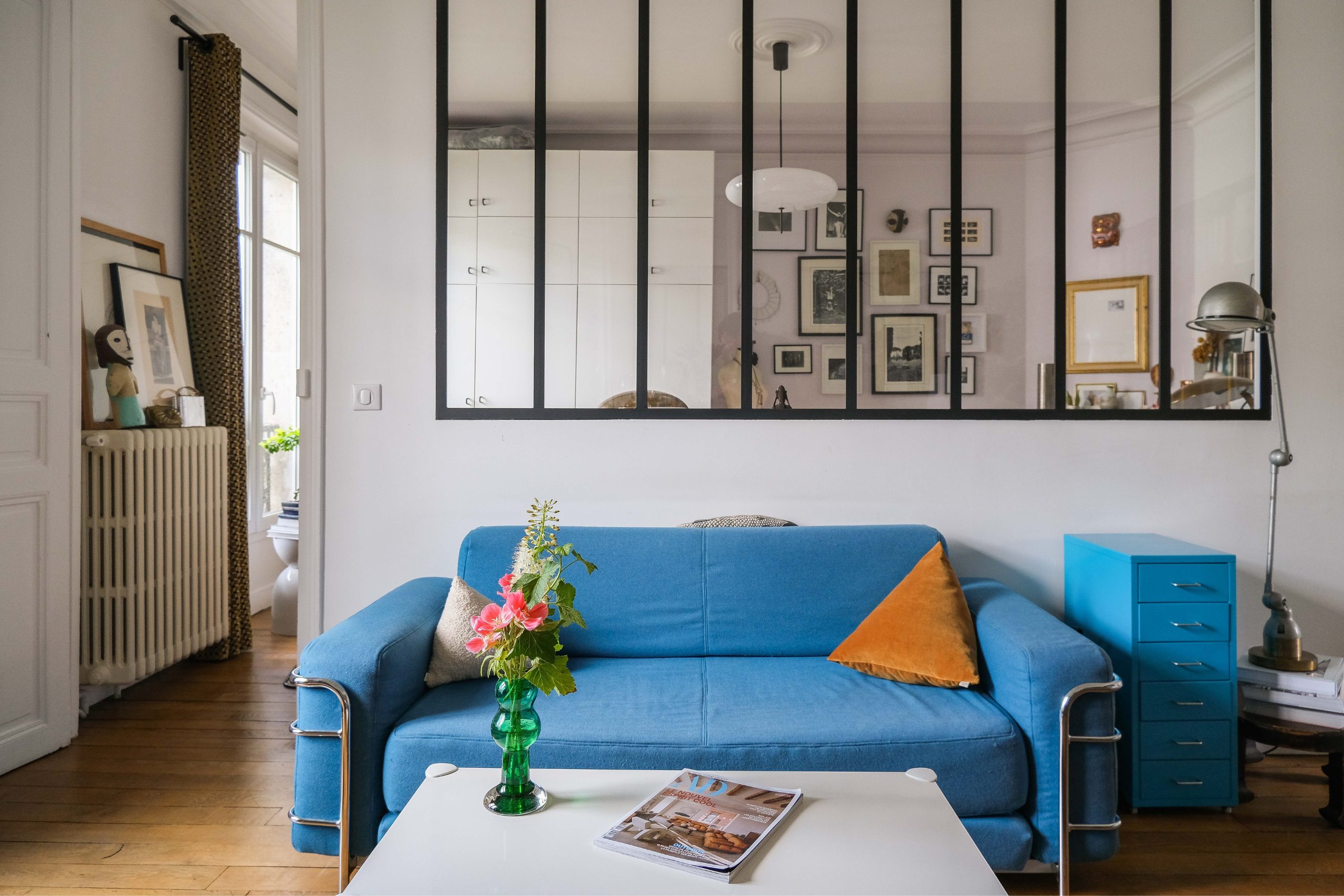
How did you plan the renovation ?
When it came to the renovation, the choice was obvious: open up, let in the light, free up perspectives. The very graphic black marble fireplaces were the starting point for all the openings. The partition between the master bedroom and the living room was replaced by a workshop-style glass roof. A second glass partition was created to bring in the more plant-like view from the kitchen island.
As a response to the living room’s urban feel, creating a space that flows through and plays with light. Our desire for greenery continued in the living room with the choice of panoramic wallpaper from Bill & walls, evoking a canopy and giving the living room the role of the apartment’s lungs.
In the kitchen, the choice of materials is graphic and strong: geometric granito cement tiles on the floor, a brutalist glass roof, and touches of brass to soften the whole. On the worktop, the emphasis is on tableware and ceramics.

“When it came to the renovation, the choice was obvious: open up, let in the light and free up perspectives.”
How did you go about decorating this living space, and where did your inspiration come from ?
In terms of furniture, our choices here were radical, bold and eclectic. There are numerous references to the “Jeunes Loups” of the ’50s (Paulin and Guariche in particular) and their ideally proportioned furniture. The centerpiece is the elm table, surrounded by Amsterdam chairs published by Steiner (A.R.P. 1952), reupholstered in water-green. On the wall, the superb, contemplative kite sconce floats above the canopy. And further back, an elegant black leather Saturne armchair by Burov, designed in 1957 and re-edited in 2010, comfortable and light. In the middle, a double-column piece of administrative furniture, an orange pop Véga amp, a polychrome Prussian stove, Flos sconces and a graphic church pew with its undulating backrest. And here and there, objects brought back from our travels: Japanese or African masks, ceramics, Massai necklaces, a true tribute to vernacular craftsmanship.
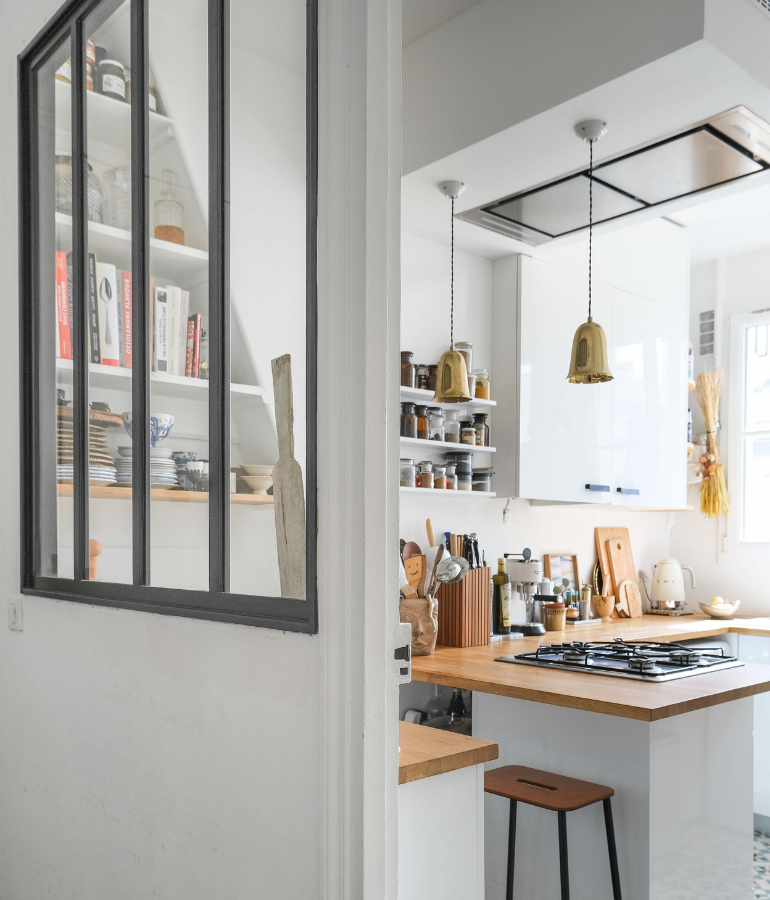

Is there anything you like about living in your apartment ?
The kitchen is the heart of the apartment, where everything happens and where we like to get together with friends. And the living room, too, is very pleasant and warm, welcoming large tables and more intimate moments around its fireplace… active !
THE 3 FETISHES
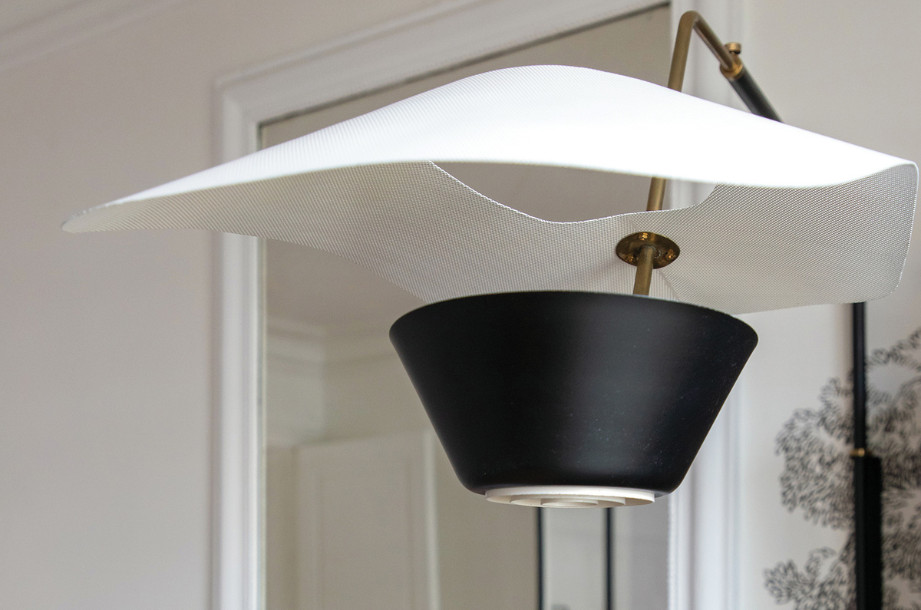
G25 WALL LAMP BY PIERRE GUARICHE
This “kite” wall lamp, in black lacquered metal and brass with its white micro-perforated reflector, is a 1952 edition by Pierre Disderot. For us, it’s one of the French architect’s most accomplished designs. We love its poetic shape, the patina of its materials and its three lighting modes – direct, indirect and reflected. A truly functional, timeless sculpture.
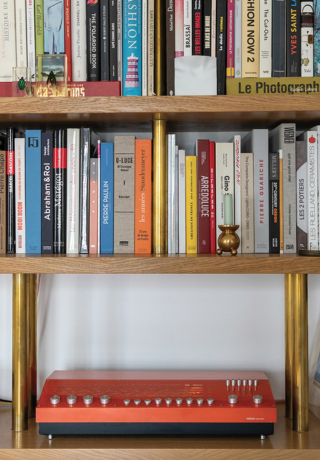
AMPLI TUNER WEGA
This 1965 tuner amp by Danish designer Verner Panton was hunted down with our very first salaries. Orange in color, rare and emblematic of its era, it leaves no one indifferent and continues to get family and friends dancing in the living room !

SAKE BOTTLE
Bought in Kyoto during our honeymoon, this sake bottle, traditionally called Tokkuri, is an antique piece. Its damaged neck has been repaired with Kintsugi, a Japanese technique using lacquer and gold powder, not to hide its imperfections but to highlight them. Its wounds reveal the beauty and uniqueness of this object steeped in history.

